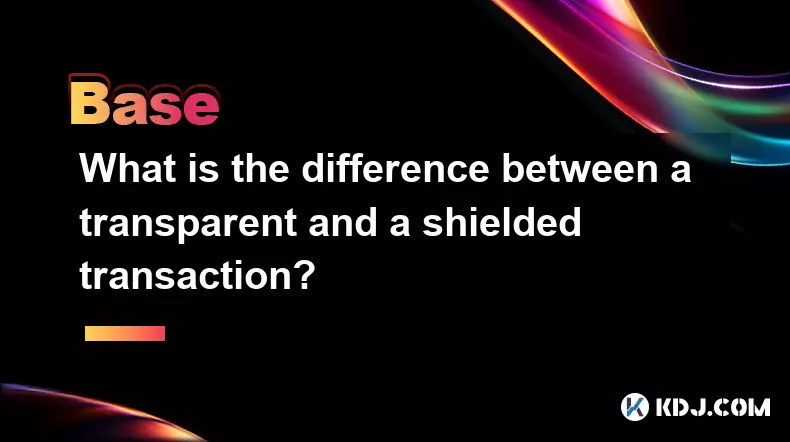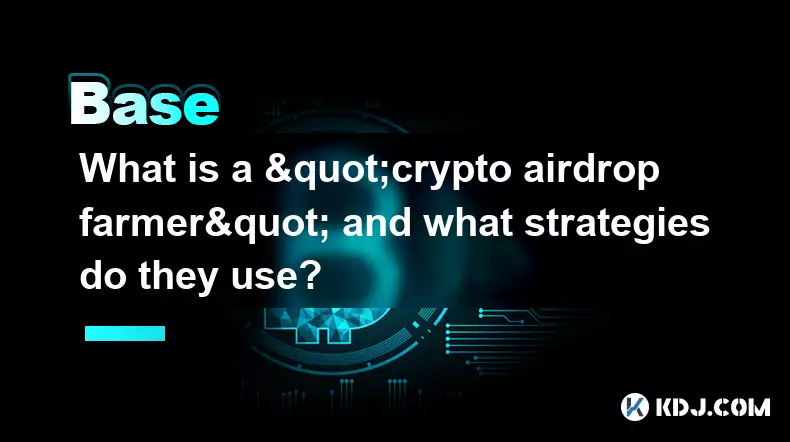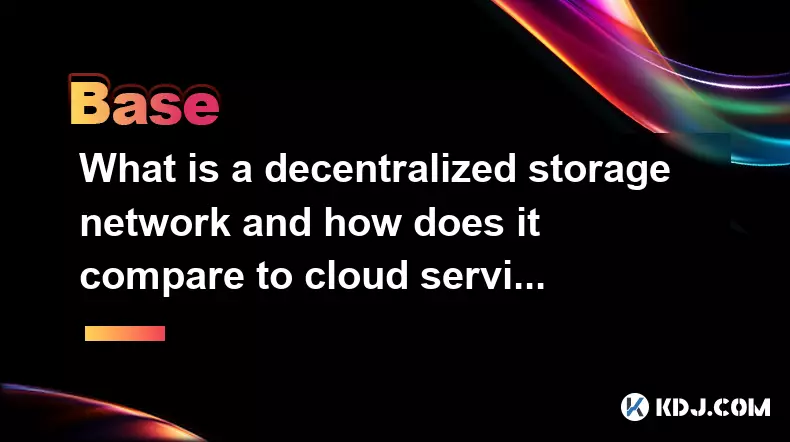-
 bitcoin
bitcoin $106680.127705 USD
0.67% -
 ethereum
ethereum $3615.722480 USD
-0.65% -
 tether
tether $0.999925 USD
-0.04% -
 xrp
xrp $2.550072 USD
5.91% -
 bnb
bnb $1002.572269 USD
-0.90% -
 solana
solana $168.746669 USD
1.08% -
 usd-coin
usd-coin $0.999832 USD
-0.03% -
 tron
tron $0.297244 USD
1.97% -
 dogecoin
dogecoin $0.182965 USD
0.71% -
 cardano
cardano $0.600432 USD
2.56% -
 hyperliquid
hyperliquid $41.439691 USD
-1.57% -
 chainlink
chainlink $16.548399 USD
2.40% -
 bitcoin-cash
bitcoin-cash $524.993680 USD
3.45% -
 stellar
stellar $0.302259 USD
4.10% -
 zcash
zcash $539.994871 USD
-16.31%
What is a vampire attack in DeFi?
A vampire attack in DeFi involves forking a protocol's code and luring users with better incentives, as seen when SushiSwap cloned Uniswap to siphon liquidity.
Jul 03, 2025 at 04:15 pm

Understanding the Concept of a Vampire Attack
In the decentralized finance (DeFi) space, a vampire attack refers to a strategy where one protocol attempts to steal users, liquidity, and value from another by copying its code and offering better incentives. This term is metaphorical, representing how one project 'sucks' the lifeblood—liquidity and user engagement—from another. The concept gained prominence with platforms like SushiSwap launching as a fork of Uniswap, promising higher rewards to liquidity providers.
The core idea behind a vampire attack lies in leveraging open-source code. Since most DeFi protocols are built on transparent blockchains like Ethereum, their codebases can be freely copied and modified. A new project can take this copied code and offer additional benefits such as higher yield farming rewards, token airdrops, or better governance structures to lure users away from the original platform.
Mechanics Behind a Vampire Attack
A typical vampire attack involves several key steps:
- Code Forking: The attacker copies the smart contracts and frontend interface of an established DeFi protocol.
- Token Incentives: A new native token is introduced, often distributed through liquidity mining programs to attract liquidity providers.
- User Migration Campaigns: Marketing efforts focus on convincing users that they will receive greater returns or more governance power by moving to the new platform.
- Liquidity Drain: As users migrate, the original protocol experiences a drop in liquidity, which may impact its efficiency and user experience.
These attacks exploit the permissionless nature of DeFi, where anyone can deploy a similar protocol without needing approval. However, they also raise concerns about centralization risks, tokenomics sustainability, and community trust.
Historical Example: SushiSwap vs. Uniswap
One of the most famous examples of a vampire attack occurred when SushiSwap launched in 2020. It was a direct fork of Uniswap’s codebase but introduced a new token called SUSHI. Liquidity providers were encouraged to migrate by receiving SUSHI tokens in addition to the standard trading fees.
Initially, the attack seemed successful as billions of dollars in liquidity moved from Uniswap to SushiSwap within days. However, concerns arose after the anonymous founder, Chef Nomi, sold a large portion of his ETH holdings, causing panic and a sharp price drop. Despite this setback, SushiSwap continued operations and evolved into a more stable protocol over time.
This case demonstrated both the power and fragility of vampire attacks. While short-term gains in liquidity were achieved, long-term success depended on maintaining trust, transparency, and technical reliability.
Implications for DeFi Protocols and Users
For established DeFi protocols, a vampire attack can pose serious threats:
- Loss of Liquidity: A sudden exodus of liquidity providers can reduce trading efficiency and increase slippage.
- Governance Challenges: Newer projects may attempt to gain influence by mimicking governance models or bribing voters.
- Brand Dilution: Multiple clones can confuse users and dilute the brand identity of the original protocol.
From a user perspective, participating in a vampire attack can have both pros and cons:
- Higher Yields: Early adopters often enjoy boosted rewards due to generous liquidity mining programs.
- Impermanent Loss Risks: Migrating liquidity frequently increases exposure to impermanent loss.
- Security Concerns: Forked protocols may not undergo the same level of auditing or scrutiny as the original.
Users must conduct thorough research before migrating assets to ensure the smart contract safety, team transparency, and economic model of the new platform are sound.
Defensive Strategies Against Vampire Attacks
To protect against vampire attacks, DeFi protocols have adopted various defensive strategies:
- Token Emissions Adjustments: Increasing token rewards temporarily to retain liquidity providers.
- Lock-In Periods: Introducing vesting schedules or locking mechanisms for liquidity provider tokens to discourage rapid migration.
- Improved User Experience: Enhancing features like interface design, cross-chain support, or advanced analytics to differentiate from clones.
- Community Building: Strengthening community bonds through active development, transparent communication, and decentralized governance participation.
Some projects have even embraced the competition by engaging in bribe wars, where they incentivize liquidity providers to stay put by matching or exceeding the rewards offered by attackers.
Technical Steps Involved in Executing a Vampire Attack
Launching a vampire attack typically follows a structured process:
- Source Code Audit: The attacker analyzes the target protocol's smart contracts and frontend interface.
- Fork Deployment: The code is deployed on the same blockchain network, often using tools like Hardhat or Truffle.
- Token Creation: A new ERC-20 token is minted and integrated into the forked system.
- Rewards Distribution Setup: Smart contracts are configured to distribute tokens to liquidity providers.
- Marketing Launch: Social media campaigns, airdrop announcements, and partnerships are used to drive adoption.
- Liquidity Migration Tools: Interfaces or scripts are developed to help users easily move their liquidity from the original platform.
Each step requires careful planning and execution to maximize the chances of successfully draining liquidity from the targeted protocol.
Frequently Asked Questions
Q: Can a vampire attack occur outside of DeFi?A: While the term originates in DeFi, similar strategies exist in traditional tech sectors where companies copy products and offer better monetization to creators or users.
Q: Are all forks considered vampire attacks?A: No. Many forks are experimental or aim to improve upon existing systems without directly targeting liquidity or users of the original platform.
Q: How do users know if a new protocol is part of a vampire attack?A: Signs include near-identical interfaces, heavy marketing around liquidity migration, and promises of significantly higher yields compared to the original.
Q: Is it safe to participate in a vampire attack-driven platform?A: Safety depends on factors like contract audits, developer reputation, and tokenomics structure. Users should always perform due diligence before committing funds.
Disclaimer:info@kdj.com
The information provided is not trading advice. kdj.com does not assume any responsibility for any investments made based on the information provided in this article. Cryptocurrencies are highly volatile and it is highly recommended that you invest with caution after thorough research!
If you believe that the content used on this website infringes your copyright, please contact us immediately (info@kdj.com) and we will delete it promptly.
- CRWV Shares Tumble Amid Data Center Delays and Weak Outlook
- 2025-11-11 21:15:01
- Price Prediction, EMAs, and Breakout Setups: Decoding SOON's Potential
- 2025-11-11 21:00:01
- IND vs SA: A Coin of Peace Featuring Gandhi and Mandela
- 2025-11-11 21:15:01
- Pi Network: Navigating Token Supply and the Slow Updates Dilemma
- 2025-11-11 21:40:01
- XRP's Wild Ride: Profit-Taking Meets Price Rebound – What's Next?
- 2025-11-11 21:50:00
- BlockDAG, Aptos, Crypto Confidence: Navigating the Builder Economy in 2025
- 2025-11-11 21:20:01
Related knowledge

What is the difference between a transparent and a shielded transaction?
Nov 10,2025 at 05:59pm
Understanding Transparent Transactions in Cryptocurrency1. Transparent transactions are the standard form of transaction on most public blockchains li...

What is a "crypto airdrop farmer" and what strategies do they use?
Nov 09,2025 at 03:39pm
What Is a Crypto Airdrop Farmer?1. A crypto airdrop farmer is an individual who actively participates in blockchain projects to qualify for free token...

How does a crypto insurance protocol work?
Nov 08,2025 at 12:39am
Understanding Crypto Insurance Protocols1. A crypto insurance protocol operates by offering financial protection against losses incurred from digital ...

What is token composability and why is it called "DeFi Legos"?
Nov 09,2025 at 06:39am
Bitcoin's Role in Decentralized Finance1. Bitcoin remains the cornerstone of decentralized finance, serving as a benchmark for value and trustlessness...

What is an "exploit" versus a "hack" in the context of smart contracts?
Nov 09,2025 at 12:40am
Understanding Exploits in Smart Contracts1. An exploit refers to the utilization of a known vulnerability within a smart contract’s code to gain unint...

What is a decentralized storage network and how does it compare to cloud services?
Nov 07,2025 at 11:59pm
Understanding Decentralized Storage Networks1. A decentralized storage network distributes data across a peer-to-peer infrastructure rather than relyi...

What is the difference between a transparent and a shielded transaction?
Nov 10,2025 at 05:59pm
Understanding Transparent Transactions in Cryptocurrency1. Transparent transactions are the standard form of transaction on most public blockchains li...

What is a "crypto airdrop farmer" and what strategies do they use?
Nov 09,2025 at 03:39pm
What Is a Crypto Airdrop Farmer?1. A crypto airdrop farmer is an individual who actively participates in blockchain projects to qualify for free token...

How does a crypto insurance protocol work?
Nov 08,2025 at 12:39am
Understanding Crypto Insurance Protocols1. A crypto insurance protocol operates by offering financial protection against losses incurred from digital ...

What is token composability and why is it called "DeFi Legos"?
Nov 09,2025 at 06:39am
Bitcoin's Role in Decentralized Finance1. Bitcoin remains the cornerstone of decentralized finance, serving as a benchmark for value and trustlessness...

What is an "exploit" versus a "hack" in the context of smart contracts?
Nov 09,2025 at 12:40am
Understanding Exploits in Smart Contracts1. An exploit refers to the utilization of a known vulnerability within a smart contract’s code to gain unint...

What is a decentralized storage network and how does it compare to cloud services?
Nov 07,2025 at 11:59pm
Understanding Decentralized Storage Networks1. A decentralized storage network distributes data across a peer-to-peer infrastructure rather than relyi...
See all articles









































































